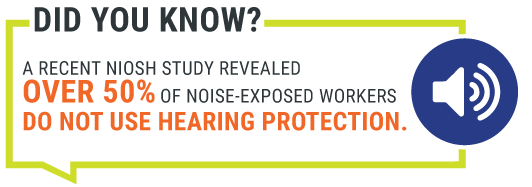April 2022
Listen Up! Is Your Hearing Protection Program Sound?
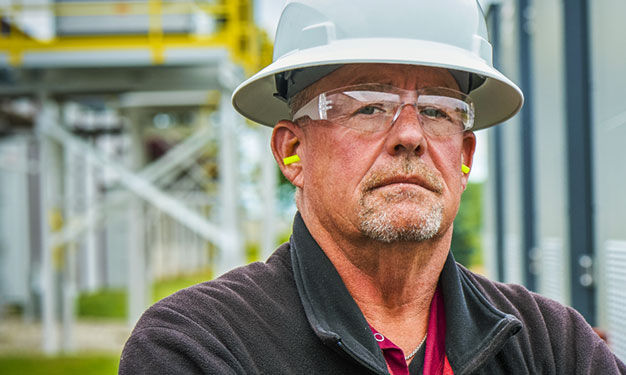
Every day at work and at home, we’re surrounded by sounds. Some of them are soft and pleasant like birds chirping or a fan whirring. And some of them are loud and obnoxious, like the sound of a jackhammer, siren or the ultimate worst — nails on a chalkboard! In all seriousness, though, prolonged exposure to loud noises in the workplace is an issue you can’t afford to tune out.
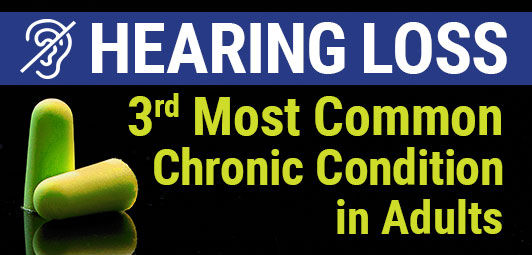
The Bureau of Labor Statistics reported private-industry workers suffered over 14,000 hearing loss cases in 2019. Hearing loss can cost your company big bucks in workers’ compensation — and cost your workers their way of life. In fact, hearing loss is the 3rd most common chronic condition in adults after high blood pressure and arthritis (CDC). To help prevent hearing loss, it’s important to assess your workplace for hearing-related issues often. For instance, are your workers constantly plugging their ears? Are they using earbuds or headphones for hearing protection? Do workers ever joke about wearing hearing protection or feel it’s not necessary?
Additional questions to ask yourself:
- Have you noticed an increase in workers’ comp costs due to hearing-related issues?
- Are your workers reporting loud noises in new areas of your facility?
- Are you seeing workers not wearing their hearing protection properly?
- Do your workers blast music while working?
- Have workers in a noisy environment frequently asked you to repeat what you just said?
- Do your workers constantly need ear protection replacement?
- Are workers not visually inspecting their hearing protection before each use?
- Are workers constantly readjusting their hearing protection?
- Do you spot workers not wearing their hearing protection?
- Are workers neglecting to clean or maintain their hearing protection?
If your workplace has more than one of these or similar problems... it’s time to beef up your hearing protection program!
Top 3 Misconceptions About Hearing Protection
Certain misconceptions might prevent your employees from wearing hearing protection or using it correctly. The internet is chock-full of information that can help you maintain hearing safety in your workplace. However, many misconceptions exist about hearing protection that you and your employees need to steer clear of, including:
1. Headphones can be used as hearing protection. This is a popular misconception. Headphones can be just as dangerous as not wearing hearing protection at all. If workers crank the volume in their headphones, they risk damaging their hearing. Keep in mind that loud music will only add to the noise, not drown it out.
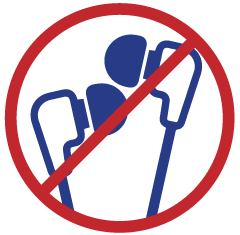
2. Hearing protection can hurt, not help. This one should go without explanation. However, it’s a well-known misconception that hearing protection (like earbuds) can cause ear-drum damage or infections. You certainly need to ensure you’re not overprotecting workers, but the notion that hearing protection is a primary cause of infections is false. If you train workers how to properly wear, maintain, and clean their protection, you should be safe.
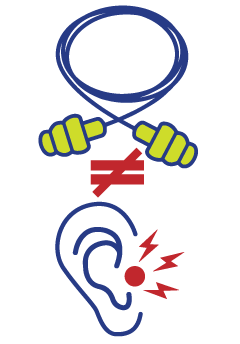
3. Hearing protection isn’t necessary when you’re used to loud noises. Just because workers claim they are used to loud noises outside of their daily work (or while at work), doesn’t mean their hearing isn’t compromised. It also doesn’t mean that their hearing can’t be altered in any way. Hearing loss typically happens gradually over time. Hearing protection is always necessary when noise exposure is at or above 85 decibels averaged over 8 hours of work or an 8-hour time-weighted scale. Keep in mind, it might even be needed before then.

Testing Text.
The Buck Stops Here
Your company is responsible for the safety of workers no matter what. If hearing protection is an issue in your workplace, you need to do everything you can to protect workers. For starters, make sure employees have a variety of hearing protection devices easily available, as one size does NOT fit all. If PPE isn’t comfortable, it’s more than likely employees won’t want to wear it. Next, make sure they know how to insert earplugs correctly. Finally, check in with your employees on a regular basis to ensure that your efforts at reducing noise exposure are working.
In addition to the obvious effect of hearing loss, loud noises can increase employees’ stress levels, reduce productivity, make communication and concentration difficult, and lead to accidents and injuries as a result of employees’ inability to hear warning signals. With everything at stake, now’s the time to give your hearing protection program a sound check!
